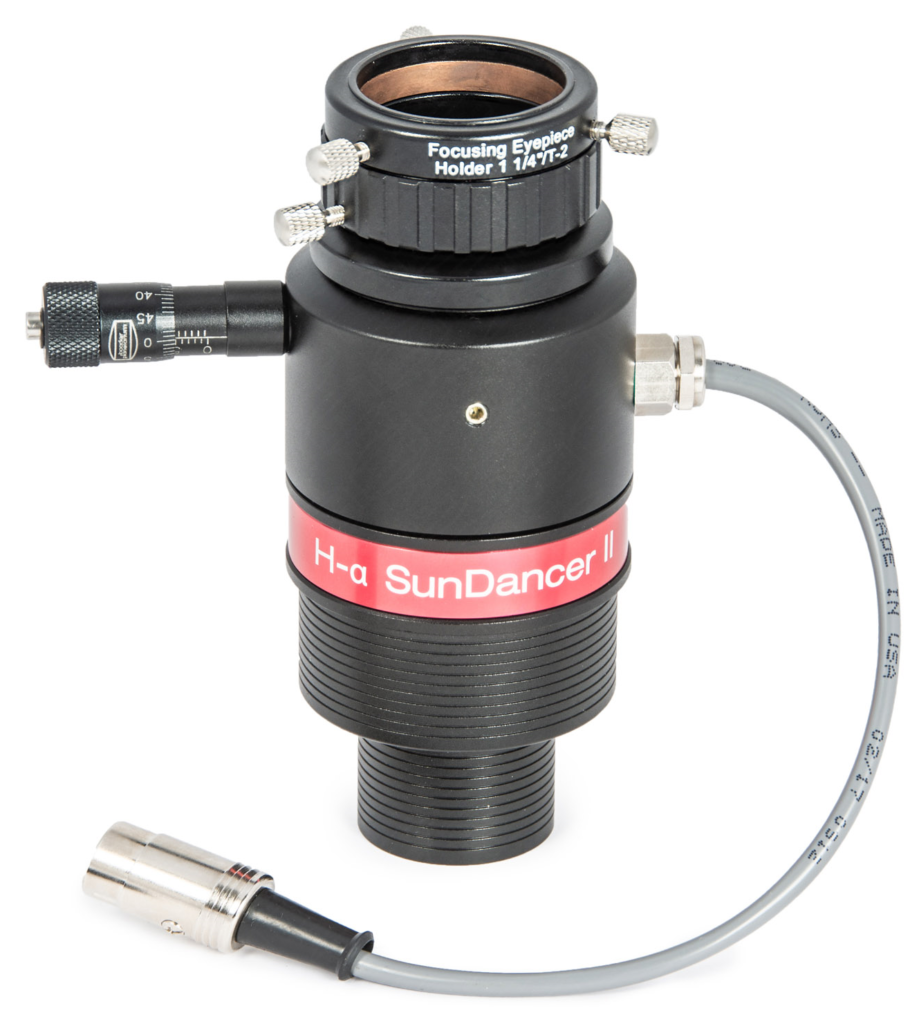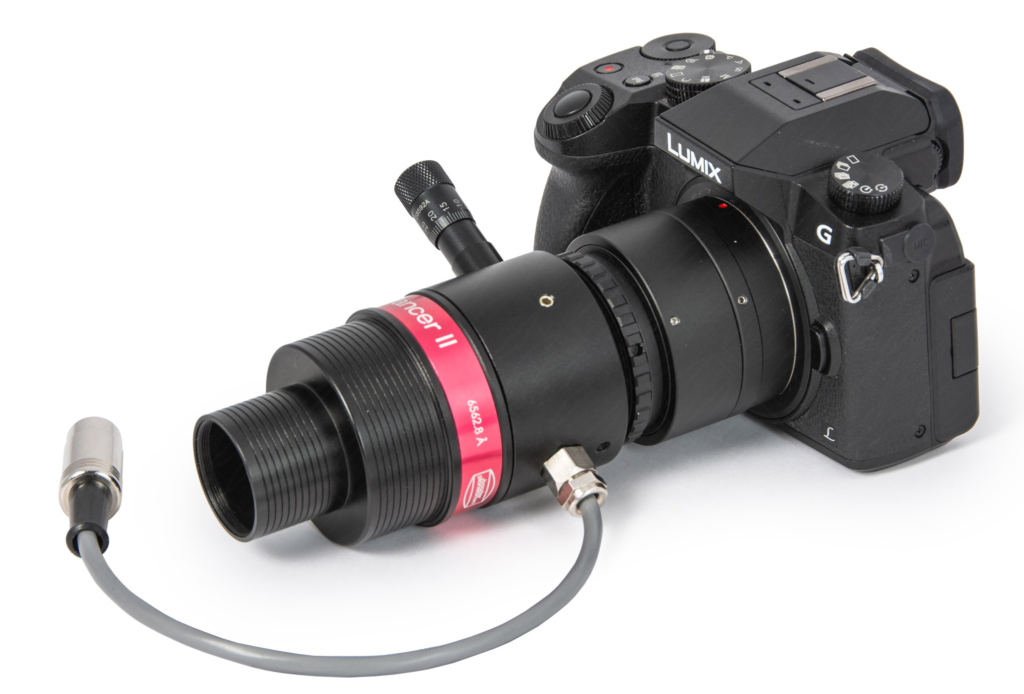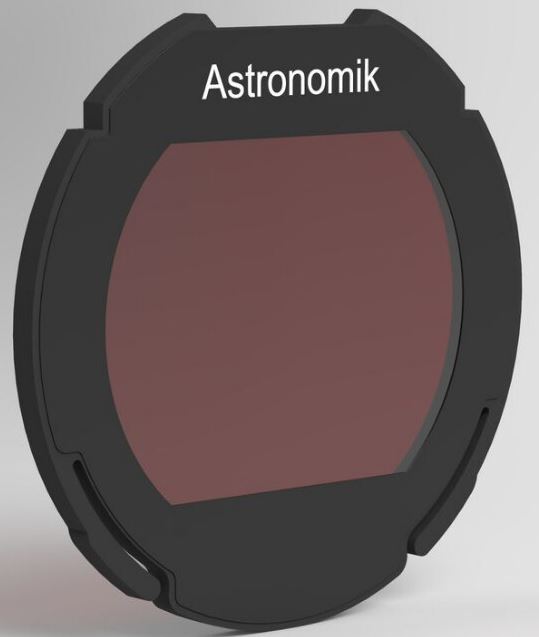The Baader SunDancer II sun filter transforms smaller refractors quickly and simply into telescopes for solar observation using H-alpha spectral lines. In this wavelength, you can see the Sun’s chromosphere with dark filaments, bright radiation bursts and spectacular solar prominences!
Simply position the SunDancer II between the diagonal mirror and the eyepiece and connect it to a power source. The filter is then automatically brought to the optimal operating temperature so that no adjustments are required during longer observations.
The SunDancer II can be safely used on refracting telescopes with apertures up to 80 millimetres. An additional energy rejection filter is only required in front of the telescope for objective apertures upwards of 80 millimetres; alternatively, the telescope can be dimmed using an optional 80mm screen in front of the lens.
Telescopes with secondary mirrors, such as Newtonian, Maksutov or SCTs, always require an additional energy rejection filter, regardless of their size.
The complete solar disc can be seen in telescopes with apertures of up to 600mm.
The T2 thread beneath the eyepiece clamp facilitates easy adaptation for larger cameras:
A power supply unit is included. For mobile observation, a powerbank can also be used.
You can find further information on this particularly high-quality H-alpha filter for the eyepiece side here in our shop.



